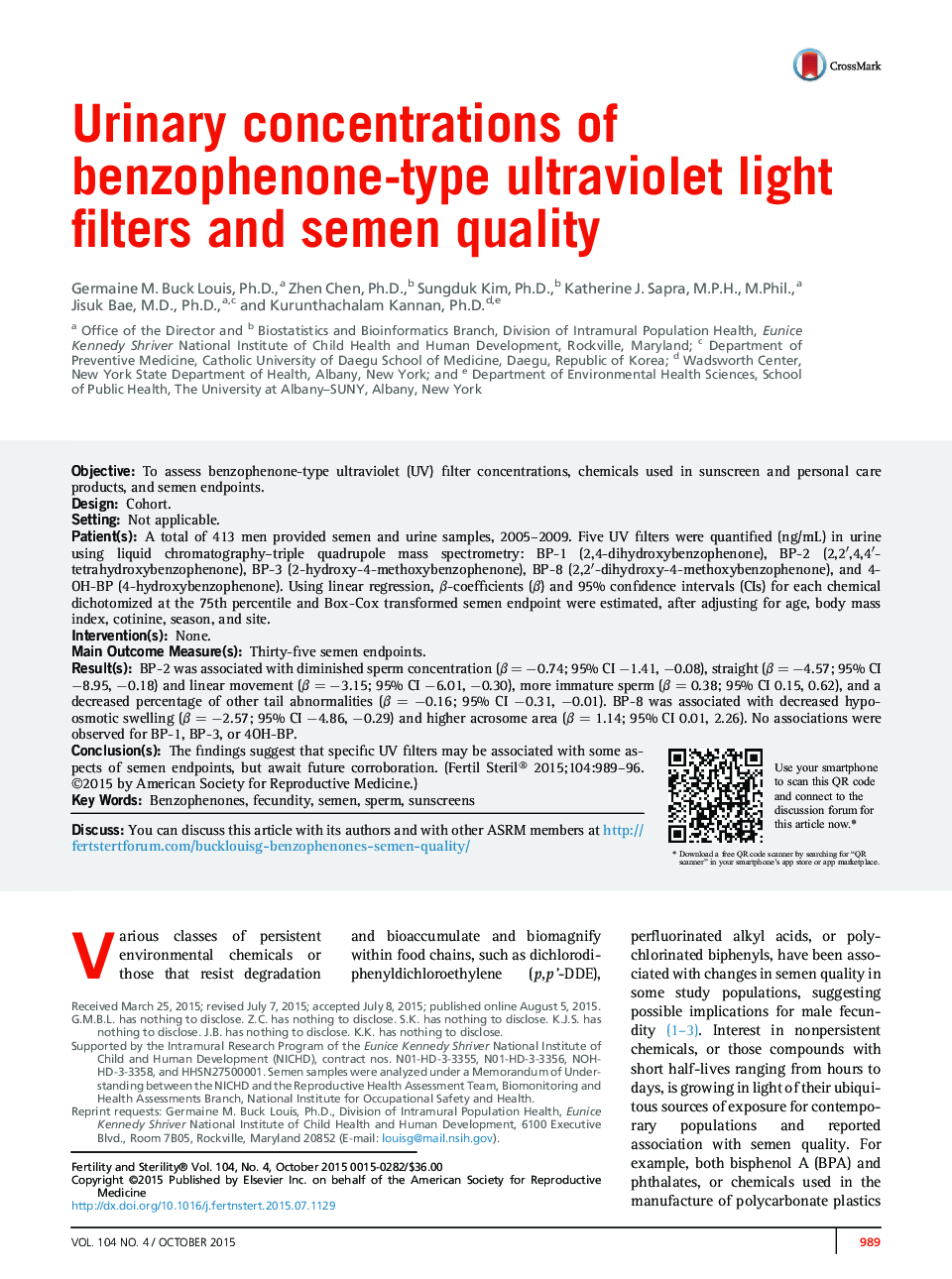| Article ID | Journal | Published Year | Pages | File Type |
|---|---|---|---|---|
| 3935816 | Fertility and Sterility | 2015 | 8 Pages |
ObjectiveTo assess benzophenone-type ultraviolet (UV) filter concentrations, chemicals used in sunscreen and personal care products, and semen endpoints.DesignCohort.SettingNot applicable.Patient(s)A total of 413 men provided semen and urine samples, 2005–2009. Five UV filters were quantified (ng/mL) in urine using liquid chromatography–triple quadrupole mass spectrometry: BP-1 (2,4-dihydroxybenzophenone), BP-2 (2,2′,4,4′-tetrahydroxybenzophenone), BP-3 (2-hydroxy-4-methoxybenzophenone), BP-8 (2,2′-dihydroxy-4-methoxybenzophenone), and 4-OH-BP (4-hydroxybenzophenone). Using linear regression, β-coefficients (β) and 95% confidence intervals (CIs) for each chemical dichotomized at the 75th percentile and Box-Cox transformed semen endpoint were estimated, after adjusting for age, body mass index, cotinine, season, and site.Intervention(s)None.Main Outcome Measure(s)Thirty-five semen endpoints.Result(s)BP-2 was associated with diminished sperm concentration (β = −0.74; 95% CI −1.41, −0.08), straight (β = −4.57; 95% CI −8.95, −0.18) and linear movement (β = −3.15; 95% CI −6.01, −0.30), more immature sperm (β = 0.38; 95% CI 0.15, 0.62), and a decreased percentage of other tail abnormalities (β = −0.16; 95% CI −0.31, −0.01). BP-8 was associated with decreased hypo-osmotic swelling (β = −2.57; 95% CI −4.86, −0.29) and higher acrosome area (β = 1.14; 95% CI 0.01, 2.26). No associations were observed for BP-1, BP-3, or 4OH-BP.Conclusion(s)The findings suggest that specific UV filters may be associated with some aspects of semen endpoints, but await future corroboration.
